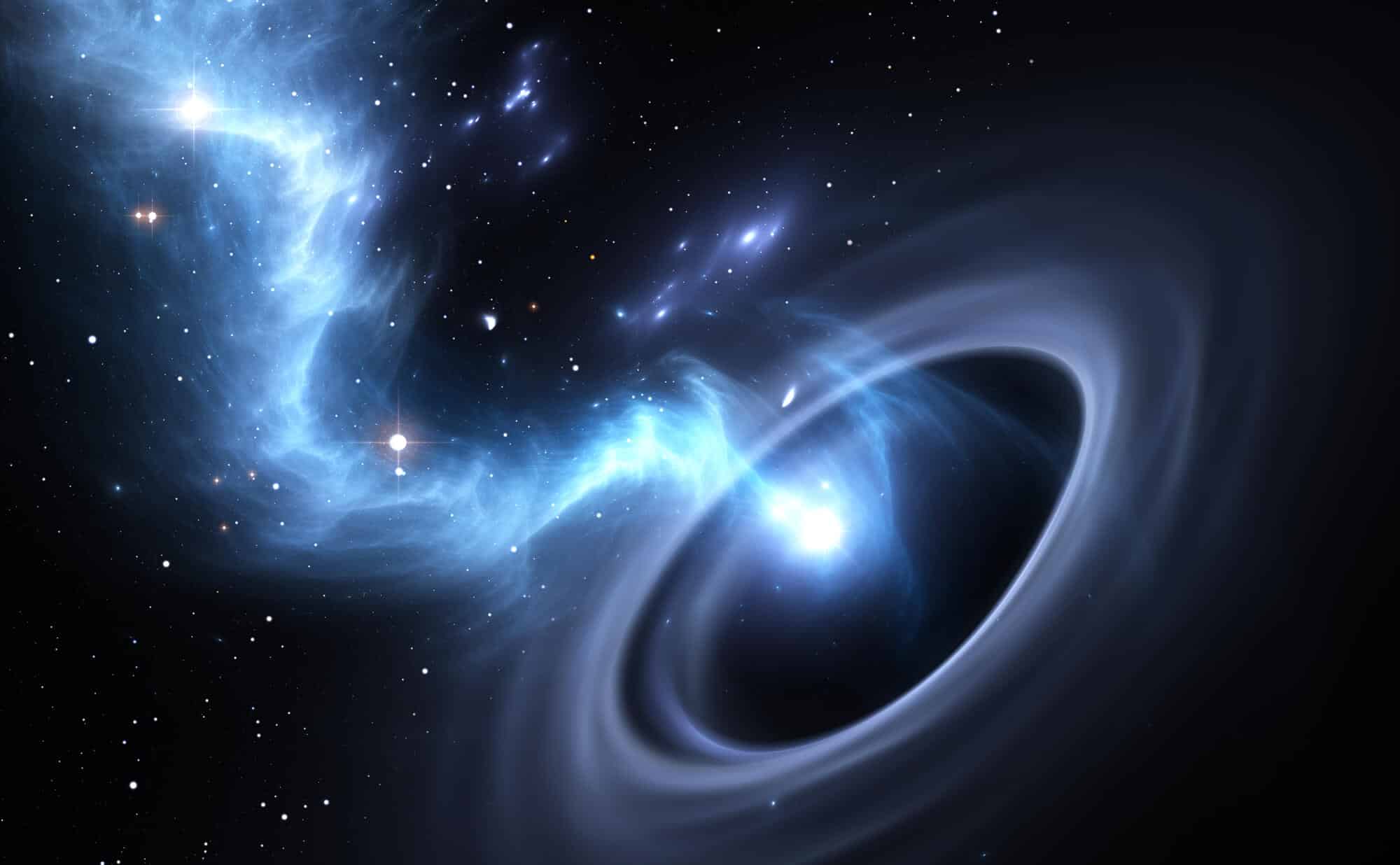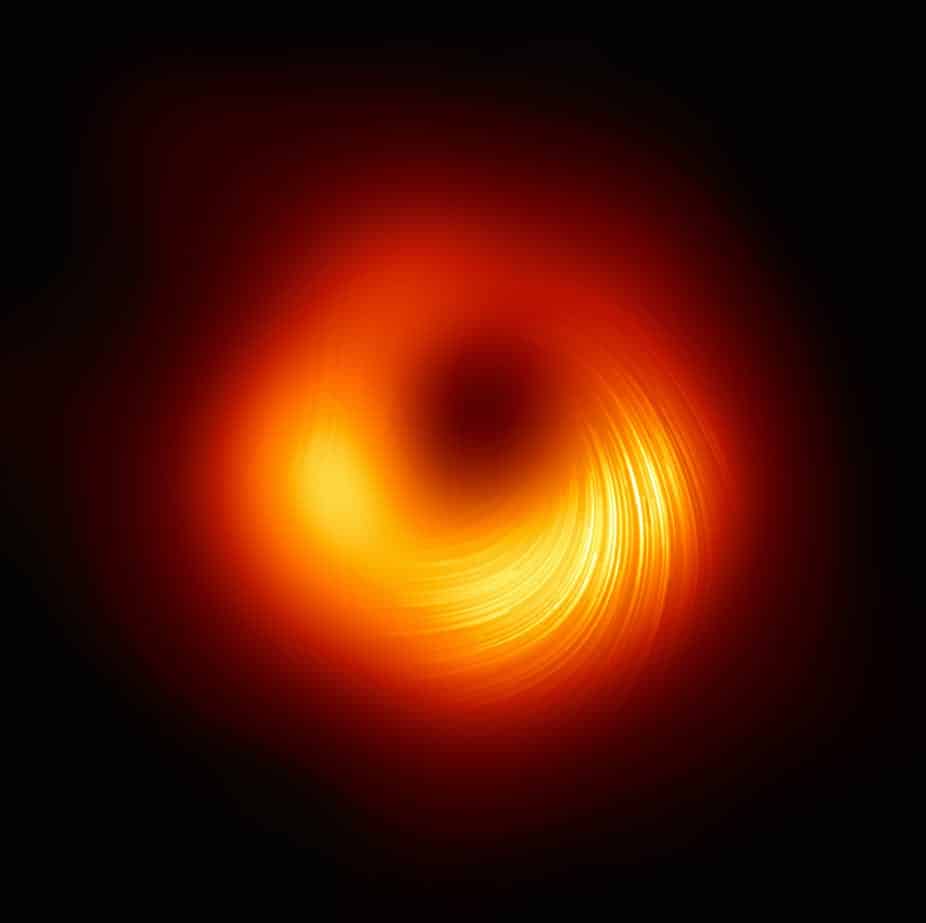Holes were able to detect a black hole that matter does not fall into or is not part of a binary system, thus it is not exposed to the eye and to almost any other instrument * Some telescopes that are under construction or ready to be used will be able to detect such individual black holes on a daily basis
By: Adam McMaster, MSc Astronomy Student, and Andrew Norton, Professor of Astrophysics Education, UK Open University

Astronomers captured the first-ever direct image of a black hole in 2019, thanks to material glowing nearby. But many black holes are actually almost undetectable. Now another team using the Hubble Space Telescope has finally found something no one has seen before: a completely invisible black hole. The study, published online and submitted for publication in the Astrophysical Journal, has not yet been peer-reviewed.
Black holes are what's left after massive stars die and their cores collapse. They are incredibly dense. Their gravity is so strong that nothing can move fast enough to escape them, including light. Astronomers are eager to study black holes because they can tell us a lot about the ways in which stars die. By measuring the masses of black holes, we can learn about what happened in the last moments of stars, when their cores collapsed and their outer layers were blown off into space.
It would seem that black holes are by definition invisible - after all they earned their name through their ability to trap light. But we can still recognize them through the way they affect other objects thanks to their strong gravitational pull. Hundreds of small black holes have been discovered thanks to this feature.
There are two different approaches to such a discovery. In "X-ray binaries" - where a normal star and a black hole orbit a common center while emitting X-ray radiation - the black hole's gravitational field can pull material away from it. The material surrounds the black hole, heats up due to friction and then the hot material glows with X-ray light, making the black hole visible, before the material from the companion star is sucked into the black hole and disappears. Pairs of black holes can also be detected when they merge and emit a short flash of gravitational waves, which are ripples in space-time.
There are many rogue black holes drifting through space without interacting with any other stars, making them difficult to detect. This is a problem, because if we can't detect isolated black holes, we can't learn how they formed and the death of the stars they came from.
New and dark horizons

To discover such an invisible black hole, the team of scientists had to combine two different types of observations over several years. This impressive achievement promises a new way to find these elusive bodies.
Gravity drainage
Einstein's theory of general relativity predicted that massive objects would bend light passing near them. This means that any light passing very close to an invisible black hole - but not close enough to fall into it - will be bent in a similar way to light passing through a lens. This phenomenon is called gravitational lensing, and it has been used for many years to study many phenomena in space, from galaxy clusters to planets around other stars.
The authors of the new study combined two types of gravitational observations in the search for black holes. It started with them noticing light from a distant star, which suddenly grew larger, before returning to its original brightness. They could not see any object closer to us that caused magnification through the process of gravitational lensing. This suggested that the object might be a single black hole, something that had never been seen before. The problem was that it could also just be a faintly luminous star.
Figuring out whether it was a black hole or a faint star required a lot of work, and this is where the second type of gravitational lensing observations come in. The authors repeatedly took pictures with Hubble over six years, measuring how far the star appeared to move when its light was deflected.
Ultimately this allowed them to calculate the mass and distance of the object that caused the lensing effect. They discovered that it was an object with 7 solar masses, located about 5,000 light years from us. It sounds far away but is actually relatively close: a star of this size and at this distance should have been visible to us. Since we can't see it, they concluded that it must be an isolated black hole.
Making so many observations with an observatory like Hubble is not easy. The telescope is very popular and there is a lot of competition for its time. And considering the difficulty of confirming such an object, you might think that the chances of finding more of them are not great. Fortunately, we are at the beginning of a revolution in astronomy. This is thanks to a new generation of facilities, including the ongoing Gaia Survey, and the soon-to-open Vera Rubin Observatory and the Nancy Grace Space Telescope, all of which will make repeated measurements of large swaths of the sky in unprecedented detail.
"It's going to be a revolution, it's going to be huge for all fields of astronomy. Thanks to repeated high-precision measurements of such a large part of the sky, we will be able to study changing phenomena on a large scale in very short time frames. We will explore objects as diverse as asteroids, supernovae and planets orbiting other stars in new ways.
When it comes to the search for invisible black holes, this means that instead of celebrating the discovery of just one black hole, we will soon be discovering many black holes as a matter of course. This will allow us to fill in the gaps in our understanding of the death of stars and the creation of black holes.
Eventually, the galaxy's invisible black holes are going to be more easily discovered and harder to hide.
For an article in The Conversation
More of the topic in Hayadan:

5 תגובות
There is no "invisible" black hole, there is a "hard to detect" black hole.
Basically, you can see any "invisible" black hole, because behind it there are supposed to be light sources, stars or galaxies, whose light stops reaching us when the three bodies (observer-black hole-light source) are in a straight line (relative to the speed of light).
If you see light being bent (including in gravitational distortion) without seeing what is bending it - it is not necessarily an "invisible" black hole, it could be a block of dark matter that does not interact electromagnetically and is therefore transparent to light, but interacts gravitationally and therefore distorts space.
Too bad there's no proofreading.. it's hard to read it like that..
At least one correction.. In Hebrew, the phenomenon you mentioned is called idle work..
The Mitzvah for the writers: you must edit the language, the writing is so bad, the information is confused and repetitive, low-level wording
Holes managed to detect a black hole?
Not true, there is no such thing